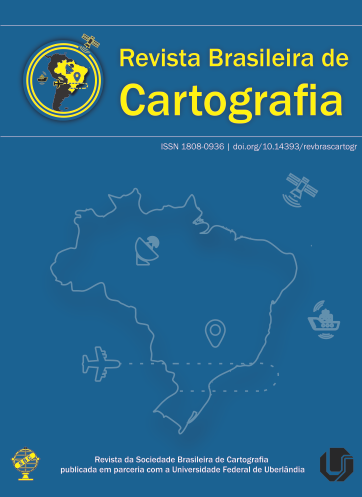Identification of Spatio-temporal Changes in Brazilian Biomes through Principal Component Analysis (PCA)
Main Article Content
Abstract
This article explores a spatio-temporal analysis of changes in land use and cover in Brazilian Biomes using data from the MapBiomas project and Principal Component Analysis. Making it possible to group spatial patterns that represent the main environmental changes and a temporal analysis of the replacement of natural environmental systems in agricultural or urban systems. The data is MapBiomas, collection 4.1, for the period between 1985 and 2018, processed in the Google Earth Engine platform and represented in thematic maps prepared in QGIS. The Principal Component Analysis enabled the reduction of the dataset from 34 images to two Principal Components, which represent 84.28% of the variance. The results indicated that the first principal component is associated with the structures of the environmental systems of Brazilian biomes and the second component is related to the processes of change in land use and land cover, with the change being called: 1) Water Surface Loss; 2) Dams or flooded areas; 3) Natural Processes and Planted Forestry and 4) Conversion of Natural Areas into Urban or Agricultural Areas correspond to 0.081%, 0.12%, 1.45%, and 13.17% of the Brazilian territory, respectively. In this context, the southern Amazon and the Cerrado are the biomes with the largest and fastest spatial-temporal changes, predominantly between 1990 and 2005. Finally, it emphasizes the potential of the Principal Component Analysis technique as a tool for identifying spatio-temporal patterns of changes in Brazilian Biomes.
Downloads
Metrics
Article Details

This work is licensed under a Creative Commons Attribution 3.0 Unported License.
Authors who publish in this journal agree to the following terms:
- Authors retain copyright and grant the journal right of first publication with the work simultaneously licensed under a Creative Commons Attribution License that allows others to share the work with an acknowledgment of the work's authorship and initial publication in this journal.
- Authors can enter into separate, additional contractual arrangements for the non-exclusive distribution of the journal's published version of the work (e.g., post it to an institutional repository or publish it in a book), with an acknowledgment of its initial publication in this journal.
- Authors are permitted and encouraged to post their work online (e.g., in institutional repositories or on their website) before and during the submission process, as it can lead to productive exchanges, as well as earlier and greater citation of published work (see "The Effect of Open Access").





